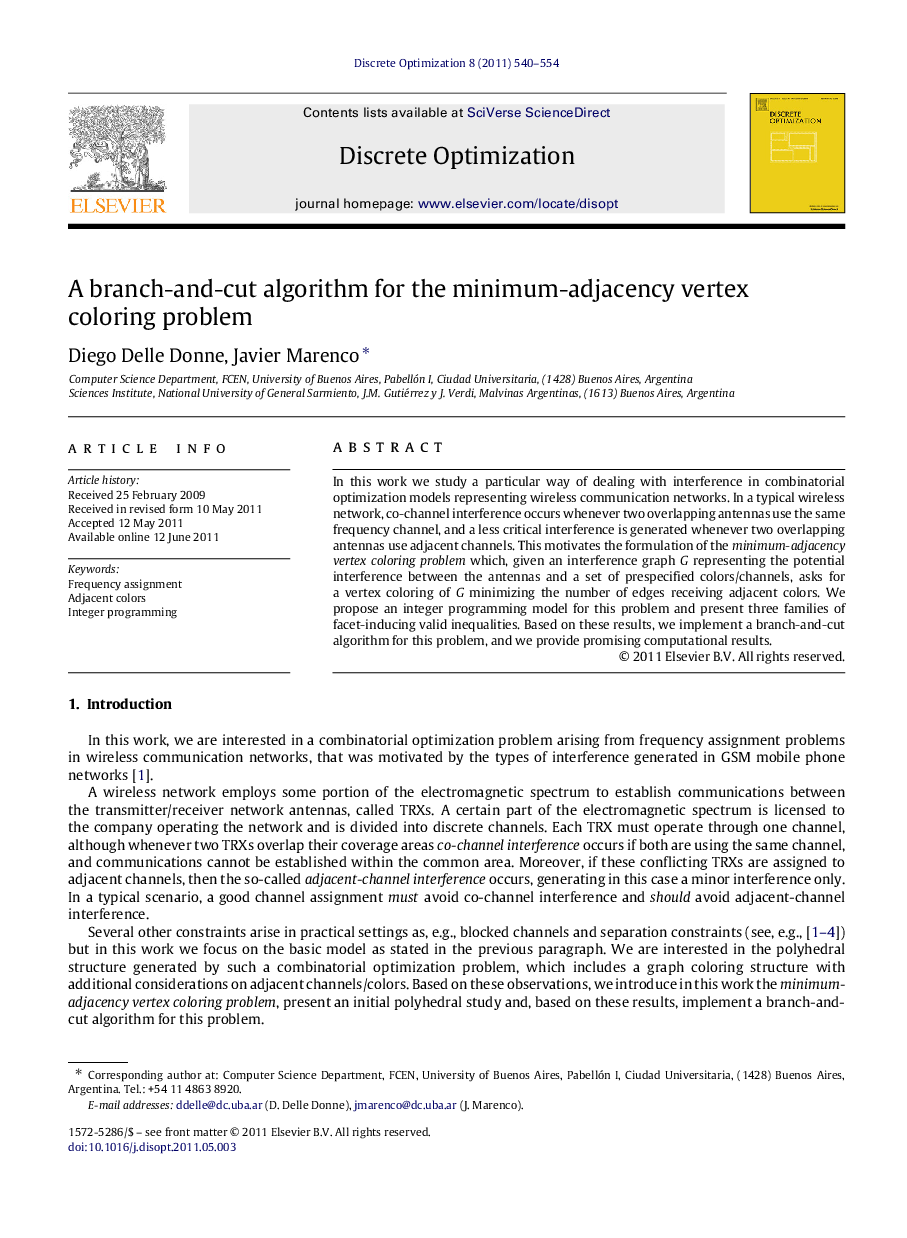| Article ID | Journal | Published Year | Pages | File Type |
|---|---|---|---|---|
| 1141869 | Discrete Optimization | 2011 | 15 Pages |
In this work we study a particular way of dealing with interference in combinatorial optimization models representing wireless communication networks. In a typical wireless network, co-channel interference occurs whenever two overlapping antennas use the same frequency channel, and a less critical interference is generated whenever two overlapping antennas use adjacent channels. This motivates the formulation of the minimum-adjacency vertex coloring problem which, given an interference graph GG representing the potential interference between the antennas and a set of prespecified colors/channels, asks for a vertex coloring of GG minimizing the number of edges receiving adjacent colors. We propose an integer programming model for this problem and present three families of facet-inducing valid inequalities. Based on these results, we implement a branch-and-cut algorithm for this problem, and we provide promising computational results.
